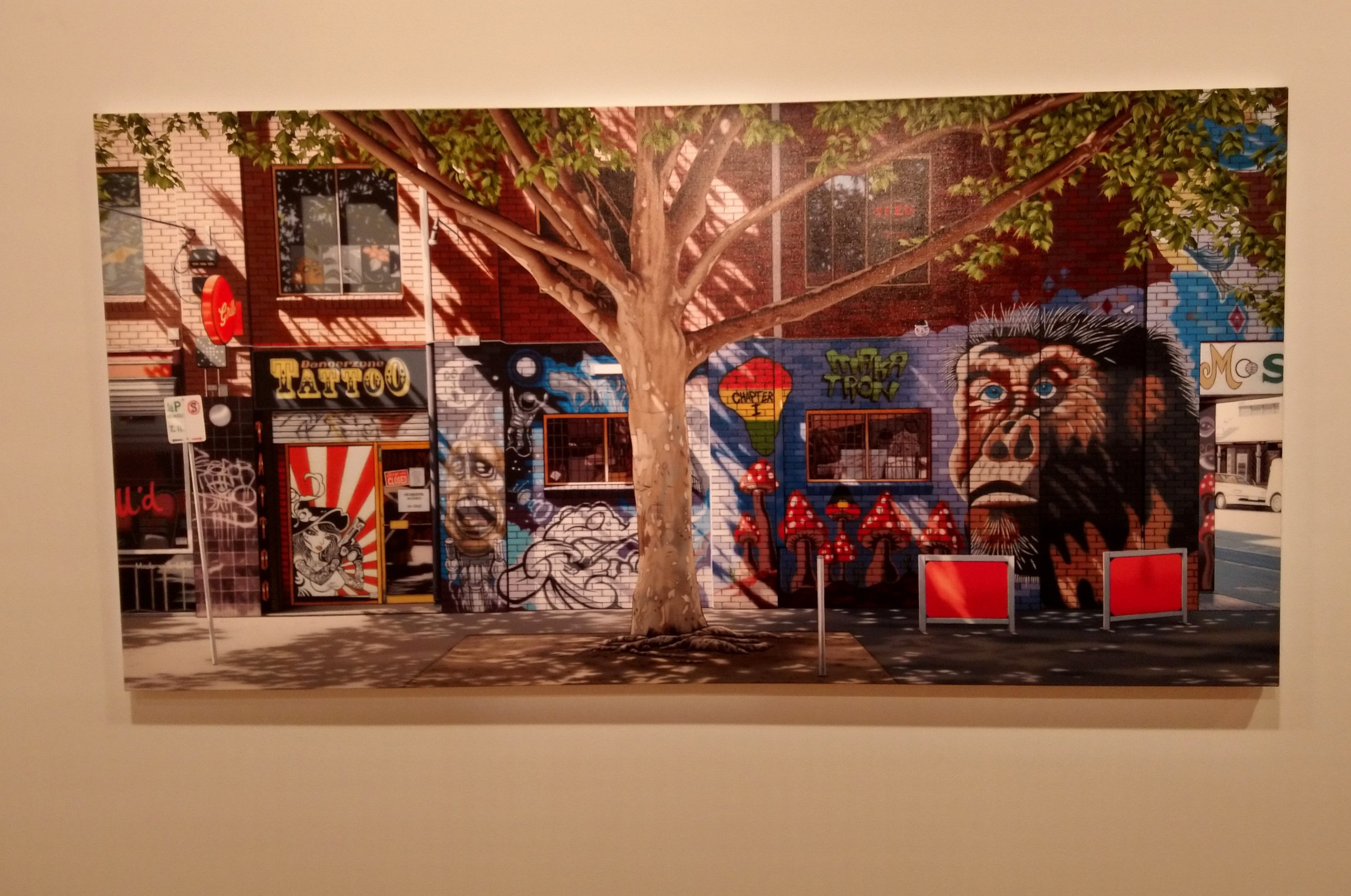This is the title of a notable exhibition currently being held at the Town Hall Gallery in Hawthorn, Melbourne. Seven local artists; Robert Clinch, Cathy Drummond, Dani Mackenzie, Andrew Browne, Rick Amor, William Breen and Mark Chu present their unique interpretations of the urban environment.
Clinch, Lot's Wife, Gouche, watercolour and dry brush on paper, 107 x 198 cm
The viewer is taken on a stroll through the streets of (mainly inner) Melbourne where a melting pot of cultures rub shoulders with one another. The catalogue refers to a romanticism in these works that is usually associated with landscape painting. The exhibition presents a vibrancy of colour and light in the works of some artists contrasting with the soft muted colours of Rick Amor’s work.
Clinch, Fanfare For The Common Man, 2003, egg tempera on panel, 107 cm x 105 cm
There is an absence of people from most of these paintings - as if the emphasis is on the environment that most of us spend our lives in. At the exhibition opening, the absence of people is noted and reference made to the recent pandemic, although most of the paintings in the show predate 2020. But there is certainly an air of alienation in some of the works, even a nostalgia for bygone era.
Drummond, Opp Shop, 2014, oil on canvas, 102 cmx 137 cm
This nostalgia is particularly evident in the paintings of Cathy Drummond. Her work includes garish shop fronts that have long disappeared in the rapid development and gentrification of inner Melbourne. Her paintings are full of character where she displays no fear of colour and a great understanding of composition. But as a poignant reminder of the reality of the human condition for many, her paintings include an image of a railway viaduct and evidence of human habitation underneath.
Clinch, Spartacus, 2013, egg tempera on panel, 107 cm x 105 cm
I have never seen an artist master the challenging medium of egg tempera the way Robert Clinch can. The clarity of light and fine detail in his work is astonishing. Whilst his works give the impression that they are based on photography, this is not the case. His compositions are a collage of multiple locations to create a seemingly realistic scene which is entirely imaginary. When speaking of his career, Clinch explains that his catholic upbringing influences the titling of his works.
Breen, Made With Love, 2012, oil on canvas, 107 cm x 214 cm
William Breen’s work is inspired by the architectural history and eclectic contemporary graffiti of the inner suburbs. In speaking of his work, Breen says “The images echo a state of suspended animation when everything slows down to a point where one can appreciate the contemplative nature of a world in balance, a world where everything is in its right place; an ideal vision.”
Mackenzie, That Little Italian Place On The Corner, 2022, oil on canvas,107 cm x 152 cm
Dani Mackenzie is becoming a significant artist on the contemporary scene. There is a soft focus to her quasi-photographic imagery, combining a dreamy atmospheric light with a sense of mystery, even a foreboding in some of her night time scenes. She is credited with infusing a mystery into the banality of everyday scenes. She spends many hours walking the streets where she lives and works, looking for images that reflect the shared experience of living in a city.
The exhibition continues until 15th April.
Hello, my name is Geoff. You may be interested to know that I’m a fulltime artist these days and regularly exhibit my work in Victoria, but particularly in Melbourne. You may wish to check out my work using the following link; https://geoffharrisonarts.com
References;
Romancing The Streetscape, Boroondara Arts


















